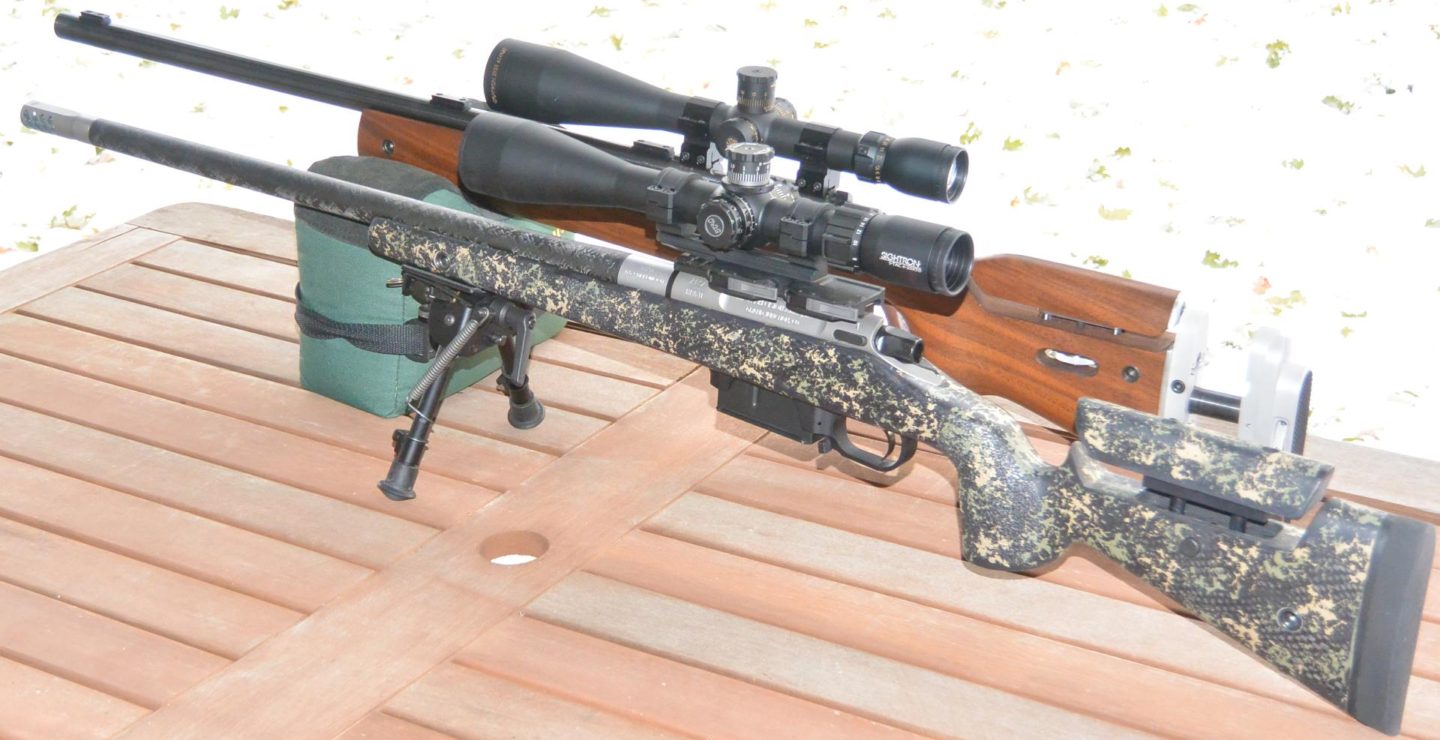Sightron S-Tac 4-20X50FFPZSIRMH on Kelbly Atlas Tactical with it’s Favorite Lapua Ammo

Table of Contents:
– Background
– Unboxing and Physical Description
– Reticle
– Comparative Optical Evaluation
– Mechanical Testing and Turret Discussion:
– Summary and Conclusion
– Testing Methodology
Background:
Sightron is best known in the target shooting community for producing solid no frills scopes at prices lower than comparable competitors. Sightron has always appeared to be low on advertising expenditures and behind the curve on features, but their quality, price, and customer service has been good. Sightron was very late to the party with ffp, mil/mil offerings, and zero stops. For years I talked to them about this and, finally, two years ago, they came out with an SIII in mil/mil ffp. That SIIISS624x50LRFFP/MH was one of the sub $1K, ffp, mil/mil scopes I reviewed last year. Since then, they have come out with both a higher cost SV ffp design and this, lower cost S-TAC which sits at $700 street with an MSPR of $1k at the time of this writing.
Unboxing and Physical Description:
At first glance, the S-TAC 4-20X50FFPZSIRMH appears to share a lot of similarities with the SIIISS624x50LRFFP/MH. They are both long and light scopes with very plain and subdued styling. The S-Tac comes in at 15″ in length and 25.6 oz weight. Both scopes’ turrets are also very similar, being 5 mil / turn with similar styling and feel. The S-TAC, however, comes standard with the better labeled and higher visibility text found on the “tactical” turrets which were an aftermarket option on the SIII and also include a zero stop. I should note that you can now get these updated adjustments (zero stop and tactical labeled turret) in the SIII with the SIIISS624X50LRZSFFP/MH model. These are the only changes from the SIIISS624x50LRFFP/MH I reviewed last year. Unfortunately, to get these additions adds a hefty $150 to the price. To that set of features, the S-Tac additionally has illumination and a flip-up throw lever on the power ring. Neither of these features is to be found on either higher cost SIII scope. In the box with the S-Tac is a lens cloth, plastic flip-up covers, two hex wrenches, a battery, and the same generic-to-all-Sightron-scopes manual that I received with the SIII last year. Said manual was supposed to have been updated to fix a minor error pertaining to angular and linear measurements in the windage and elevation movement table section, but evidently was not, as they are identical manuals. This update not happening could be worse, as it is basically a typo. However, each scope also includes a second supplemental sheet which has a reticle diagram and dimensions for said reticle, as well as a mil ranging formula. The ranging formula was wrong in the SIII’s supplemental sheet and is now somehow wrong in a different way on the S-Tac’s. These are not mere typos either, these are incorrect, non-functional, and non-sensical formulas. The correct formula should be: (target height (meters)/angle subtended (mils)) *1000 = range to target in meters. I am dismayed at both the persistence of the Sightron folks in getting this wrong and the misplaced creativity demonstrated by getting it wrong in a different way.
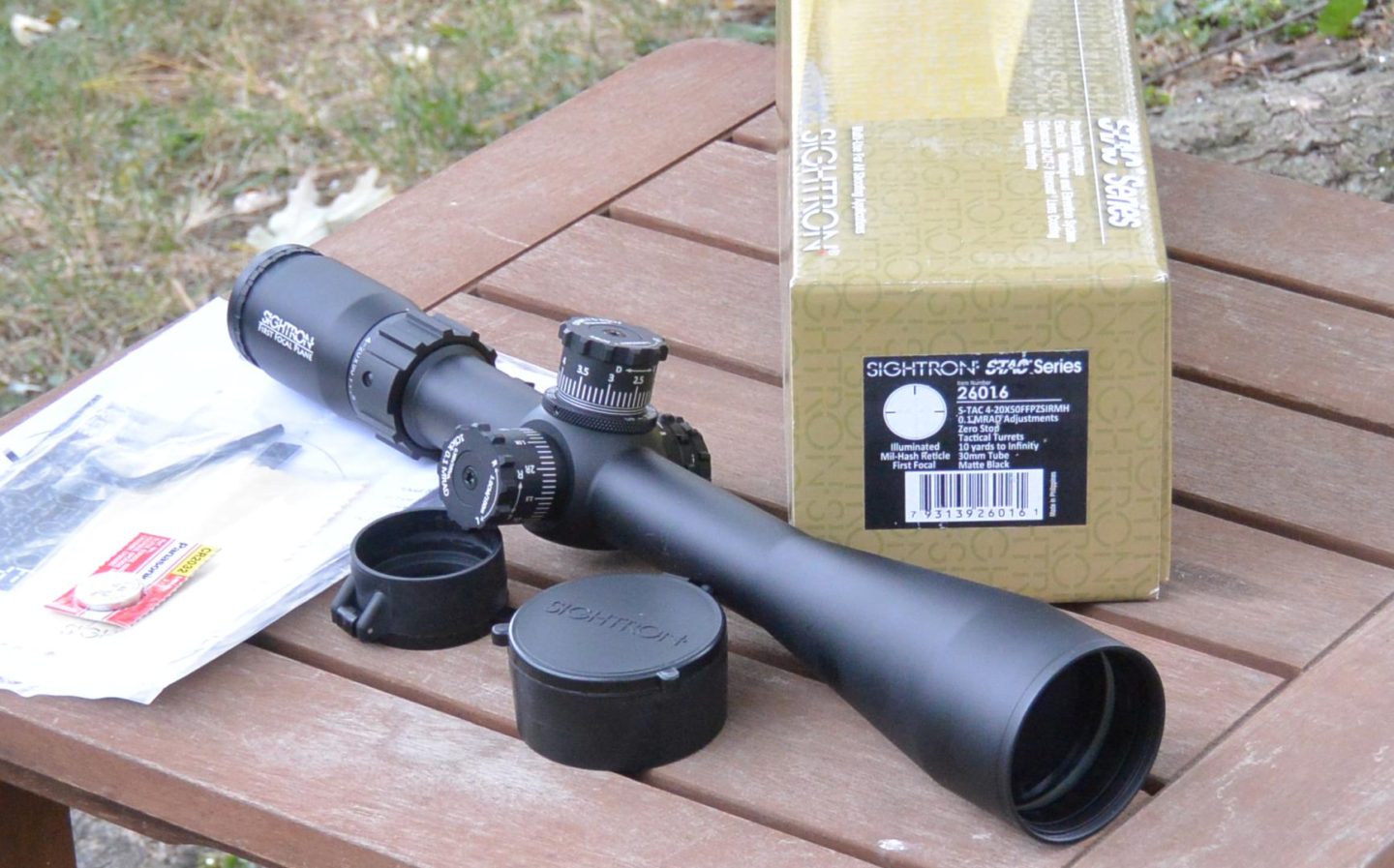
Reticle:
The Illuminated MH-4 reticle on the S-TAC 4-20X50FFPZSIRMH is very similar to that which was on the SIIISS624x50LRFFP/MH. Both are very simple mil hash reticles with .5 mil subtensions over most of the reticle and .25 for the first mil from the center. The MH-4 in the S-TAC improves on the reticle in the SIII by adding some number labels for the divisions. This may seem like a minor improvement but in practice it helps greatly in avoiding mis-counting and can also save valuable time when making adjustments. Neither reticle has a Christmas tree section, which I am not sure is a bad thing as tree sections can interfere with how well you can see the splash on a miss. The reticle on the S-TAC is also illuminated and it is substantially thicker. I expect these two may be linked since the SIII had a very fine reticle that I doubt would have illuminated well. The illumination on the S-TAC is not just on the center area but instead on the whole of the graduated section of the reticle. I prefer this arrangement. In general, I feel very much the same about the S-TAC’s reticle that I felt about the SIII”s. There is little to either enthuse or repel a prospective buyer in the design.
In testing, the reticle was correctly sized and showed no cant relative to the adjustments.
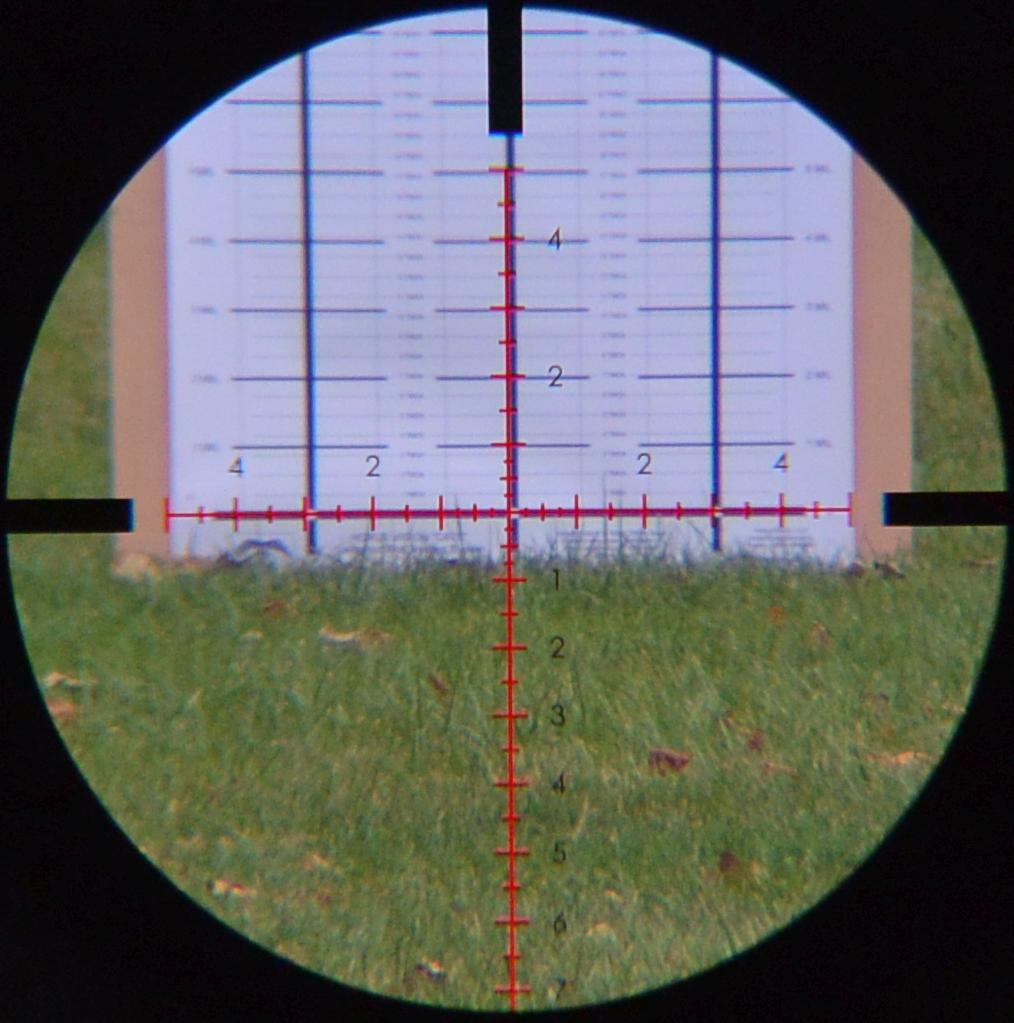
Comparative Optical Evaluation:
For optical comparisons with the S-TAC 4-20X50FFPZSIRMH, I had the entire suite of sub $1K FFP mil/mil precision rifle scopes that have been part of this ongoing series of reviews. In order of arrival, they are the: Sightron SIIISS624x50LRFFP/MH, Athlon Ares BTR 4.5-27×50 FFP IR Mil, Athlon Midas TAC 6-24×50, Meopta Optika6 5-30×56 RD FFP, Athlon Midas TAC 5-25×56, and Nikon Black FX1000 6-24x50SF Matte IL FX-MRAD. It should be noted that the Nikon was not present to be compared. The example I was originally sent proved defective, had to be returned, and its replacement has not yet arrived at the time of this writing. Testing was done in accordance with the same methodology that I have used now for a number of years.
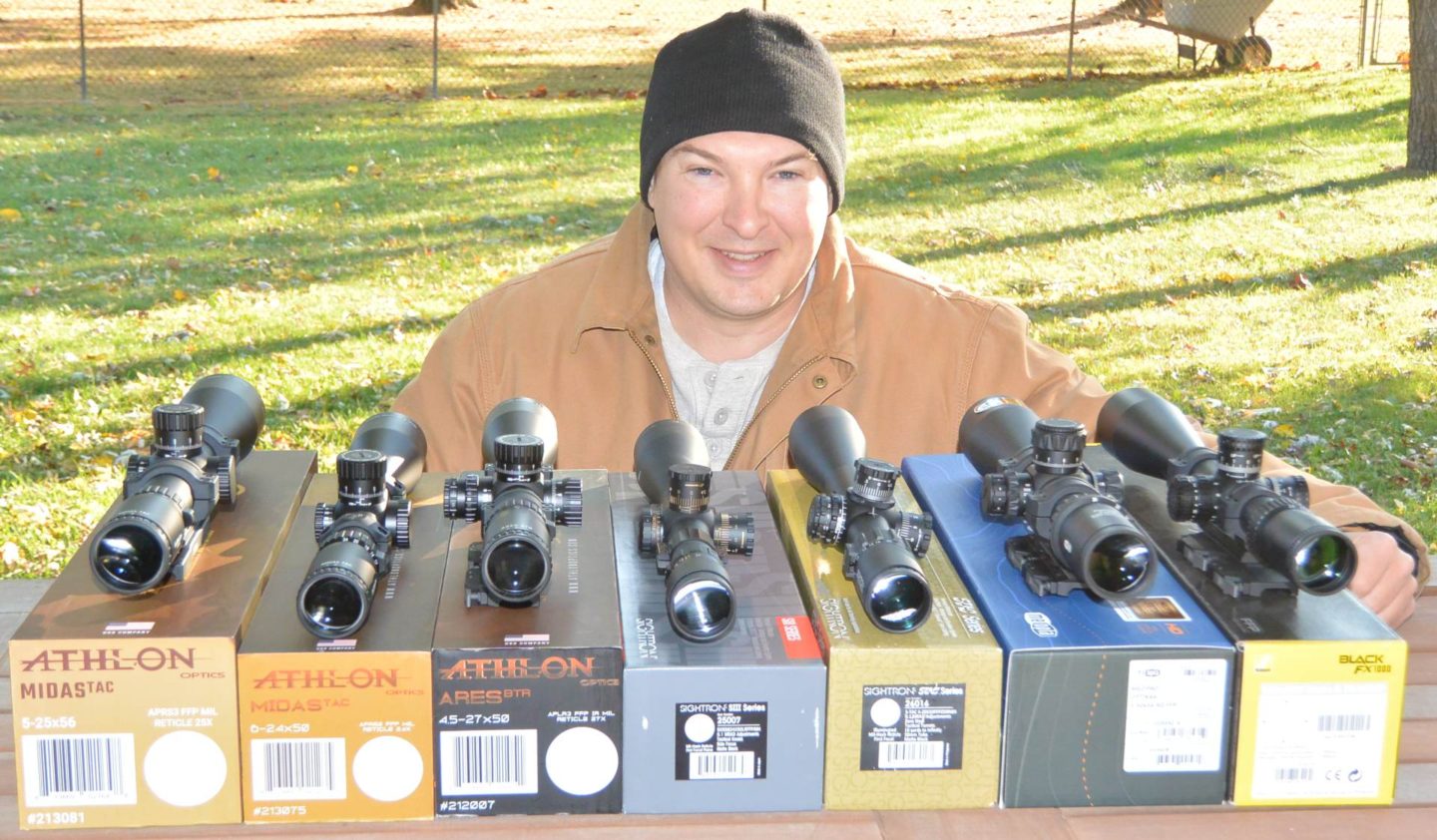
The S-TAC was one of the scopes I was most interested in doing an optical evaluation of. This was because the SIII I tested last year was, on balance, the strongest performer optically in this sub $1K series of reviews. The SIII’s consistently good performance across virtually all of the aspects of optical performance tested coupled with its light weight left me quite fond of that optic despite the features that it lacked compared to most of the other scopes in the field. Superficially, the S-TAC appeared to share some of the same design heritage; perhaps it would do well.
Suffice to say, this was not the case. I will go into more detail. Setting aside the currently-absent-soon-to-be-replaced-because-it-was-defective Nikon, the S-TAC significantly under performed all other scopes in the field. It was rather consistent in this, being at or adjacent to the bottom in resolution, FOV, depth of field, low light, contrast, stray light, and chromatic aberration. Its performance highlights were eyebox and barrel distortion, where it came in just behind its sibling. It is not an uncomfortable or tricky scope to sit behind, it just doesn’t resolve things are well as most of the other scopes I tested. The sum of all this is that the S-TAC was very obviously a tier below any of the other scopes optically and, I would say, was significantly further from the next scope above it in performance than that scope was from the top performer. Given its sibling, I was pretty surprised at this. The performance difference was enough that when I first picked it up and looked though it without a lineup of scopes, I was already pretty sure how it would stack up.
Mechanical Testing and Turret Discussion:
The S-TAC’s knobs are very similar to those on the SIII with the addition of a zero stop. The knobs are 5 mil / turn and have clicks that feel and sound positive, but are not so stressed out that they will skip over detents and make you miss count. I would therefore say that the feel is a win. As on most of the sub $1K series, the zero indicator adjusts independently of zero stop. In this case, you loosen the top screw to change the indicator setting. The knob is only fastened to the adjustment by this screw and so can be easily turned when it is loose but must be carefully lined up while being tightened as there is no indexing. The zero stop is a collar under the knob that locks into place with three set screws. Once you have zeroed the scope, you just loosen up the set screws on the collar and turn it until it snugs under the knob. The actual threading for this collar is above the section that the set screws interface with so the set screws won’t mess up the threads. Probably the best thing about this system is that the zero stop collar has a line on it for each turn above zero. This is very handy, especially since the 5 mil / turn knobs mean you will often be a few turns above. I find this a substantial improvement over designs that have lines but where you are already several up from the bottom at zero and often also at some odd increment between them. Because the lines are on the collar piece that is the zero stop, they always line up right. The least attractive feature is that the collar feels a bit like a jam nut in that the knob will jam itself onto the stop when you turn to it and stick a bit pulling it off. Overall I like the adjustment mechanism with the exception of being only 5 mil / turn and only being labeled for that first turn.
When tracking, the adjustments deviate from true in a non linear fashion.
Going up from optical center:
-At 5.0 mils on the adjustments, the scope is at 5.1mils on the target.
-At 10 mils on the adjustments it is at 10.1 mils on the target.
-Its full range is 11.5 mils on the adjustments at which point it is at 11.6 mils on the target.
-It returns to zero fine and shows no slop in the adjustments going back to center.
Going down from optical center:
-At 6.0 mils on the adjustments, it is at 6.1 mils on the target.
-At 10.0 mils on the adjustments, it is at 10.1 on the target.
-Its full range is 11.9 mils on the adjustments 12.0 on the target.
-It returns to zero fine and shows no slop in the adjustments going back to center.
On the windage, it also seems to deviate a little, showing ~3.05 mils on the target when it is 3.0 on the knobs. I expect it would prove to follow the same pattern as the elevation if I had a target that went out that far.
There is no zero shift with parallax, diopter, or power ring and I saw no reticle cant. The reticle graduations are also the correct size.
This degree of deviation from true in the tracking is about average for all the scopes I have tested over the years.
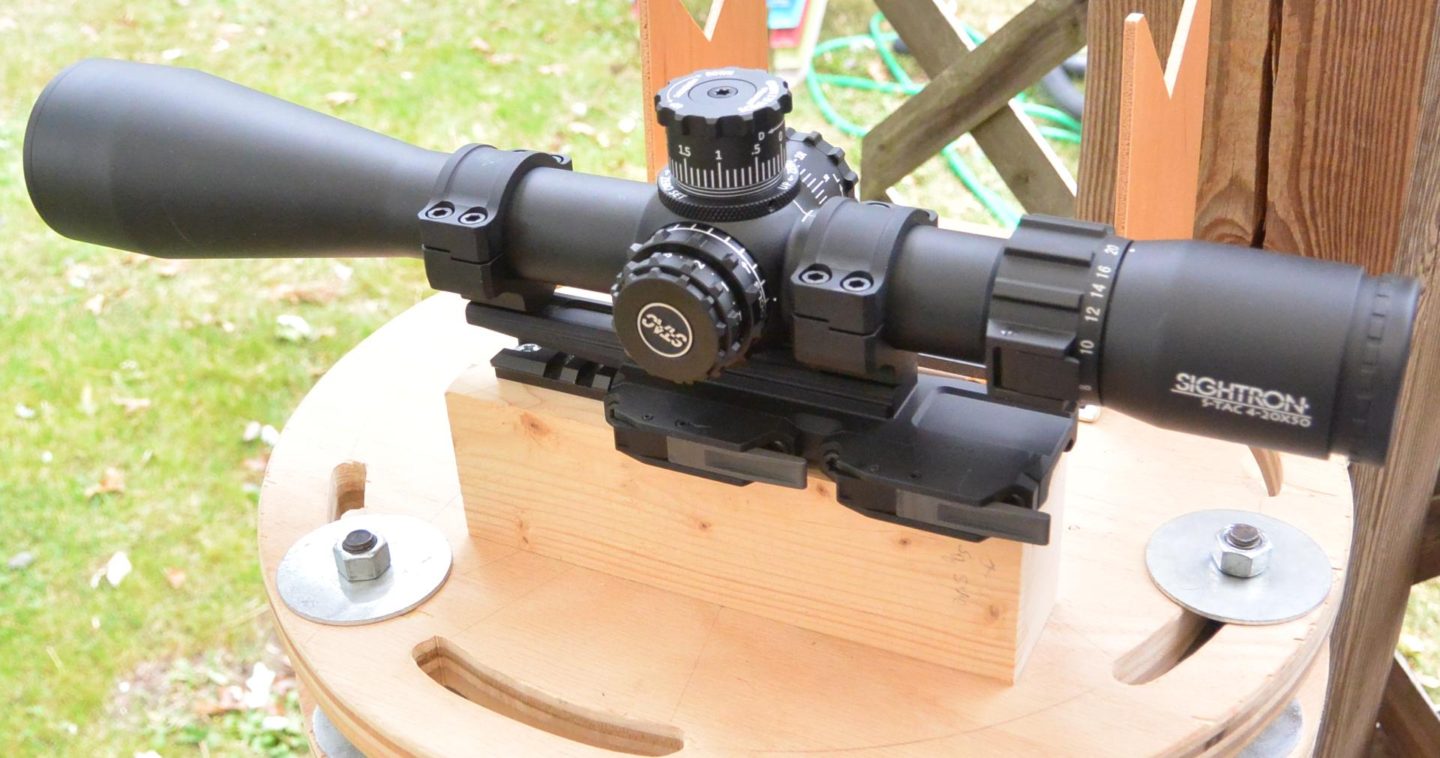
Summary and Conclusion:
There is no getting around that the Sightron S-TAC 4-20X50FFPZSIRMH left me a little disappointed. This is because it was optically a clear step below its peers in almost every dimension tested and, given the performance of its sibling SIII last year, I did not expect that. Though not the cheapest, its ~$699 street price is one of the lower costs in the field and it does have some features not present in all other scopes. Illumination is the most notable of these features, which also include a pull out throw lever and zero stop. The S-TAC is one of the only scopes to be limited to 5 mils / turn though. I don’t think that there is one universal answer in this sub $1K price range of ffp mil / mil scopes. If cost and illumination are important to you and optical performance is less important, the S-TAC has what you are looking for. Ironically, it has precisely the opposite strengths and weaknesses from its sibling SIII. I guess they were separated at birth.
Here is Your Pro and Con Breakdown:
Pros:
-Has some features not all have: Illumination, zero stop, and a detachable throw lever
-It’s zero stop system provides a good indicator of which turn you are on
-Adjustments have a good feel and the correct resistance to them so you don’t miss count clicks
-Sightron has a good warranty and reputation
-At ~$699 street, it is one of the lower cost options
Cons:
-Optically a clear step below the other sub $1K optics tested
-Only 5 mils / turn
-Significantly below average total elevation adjustment range
-Manual is lacking and contains basic errors
